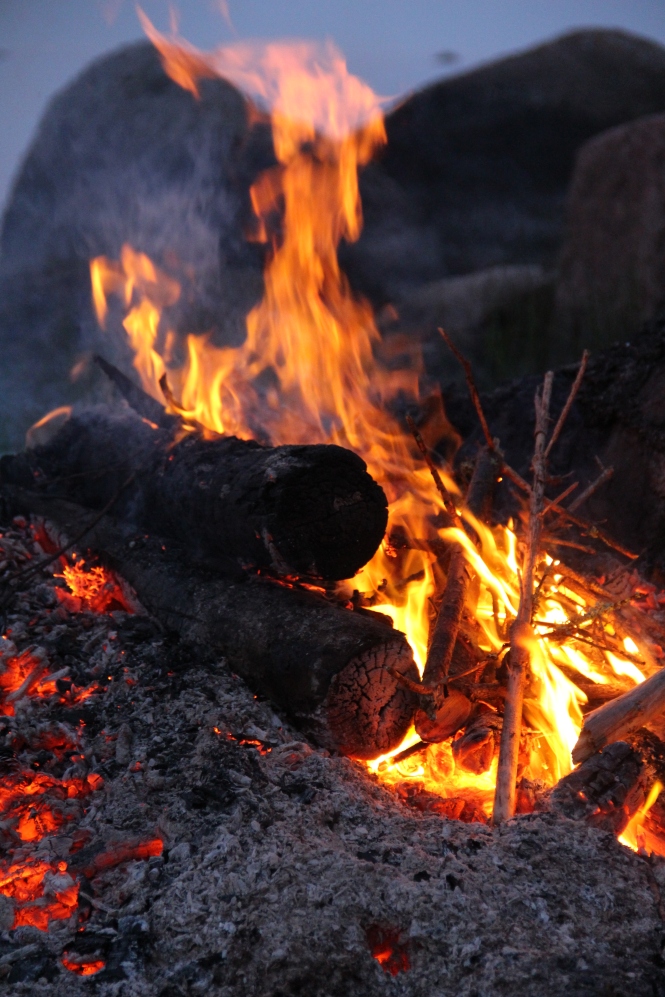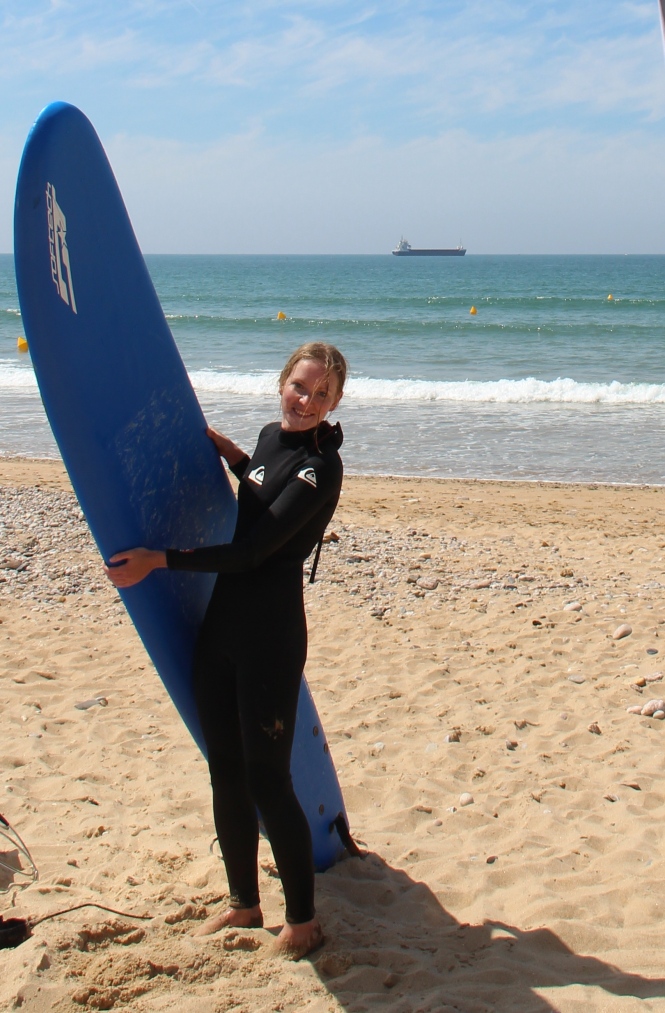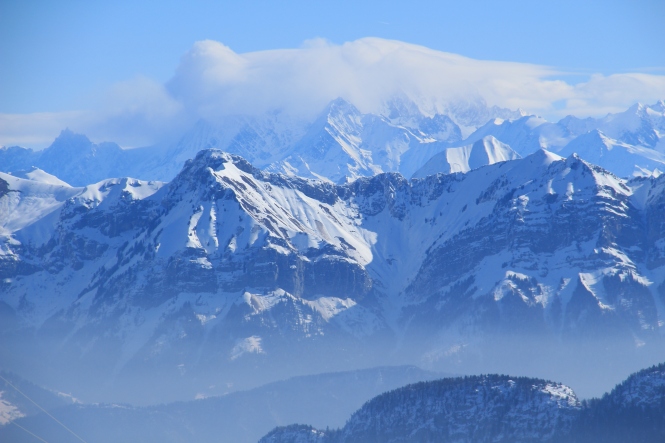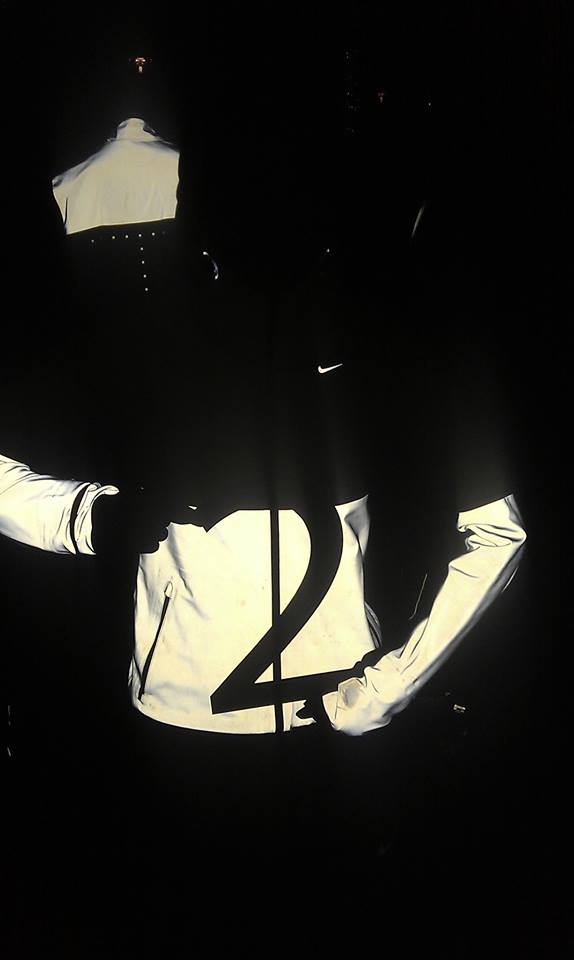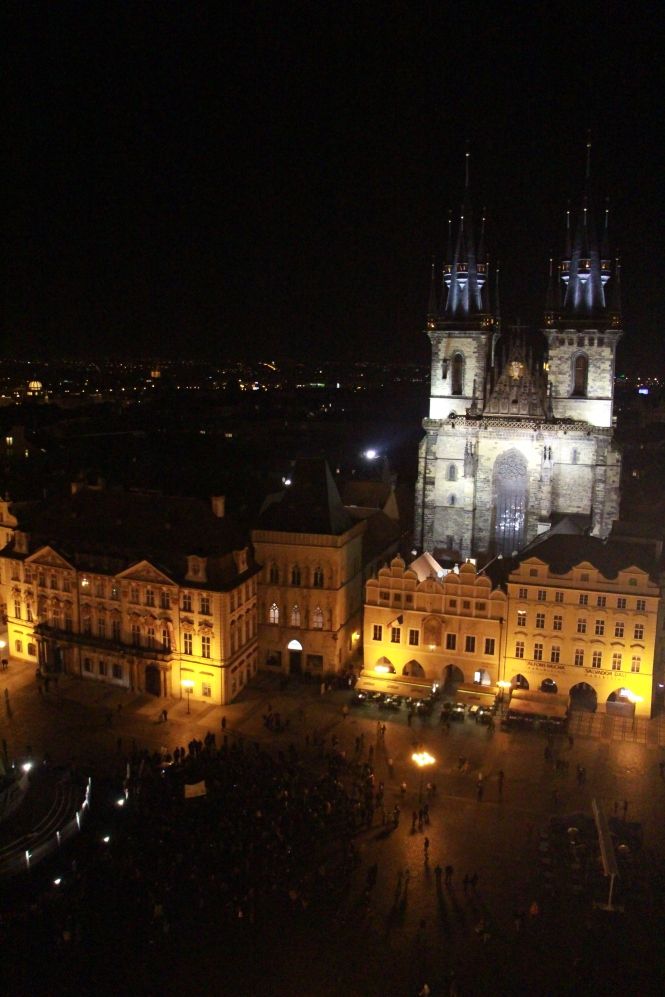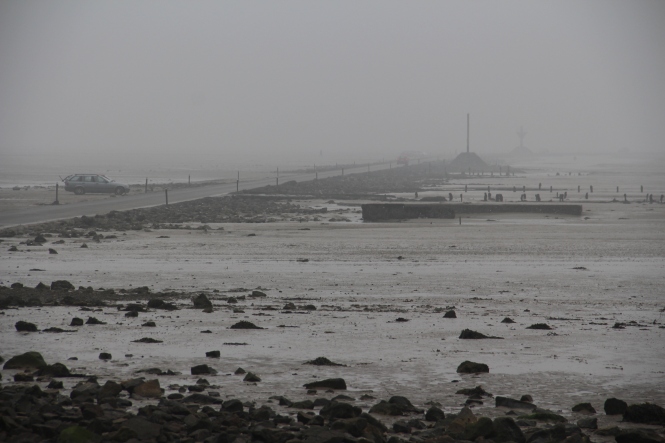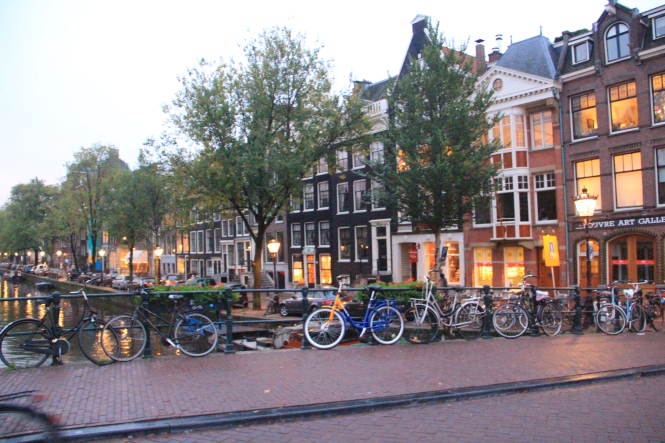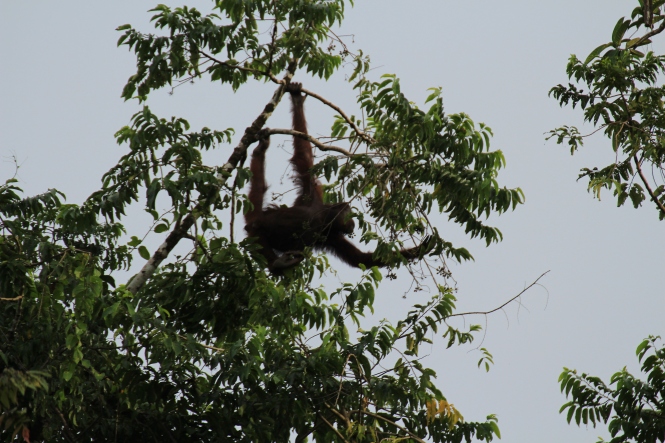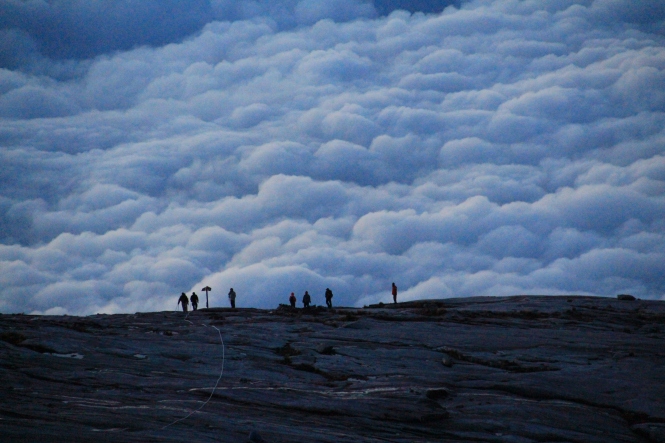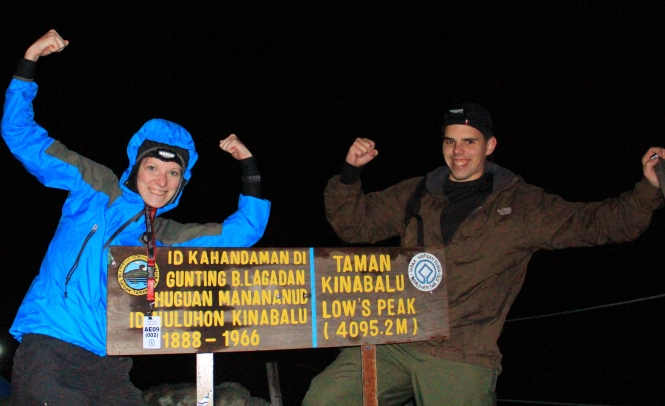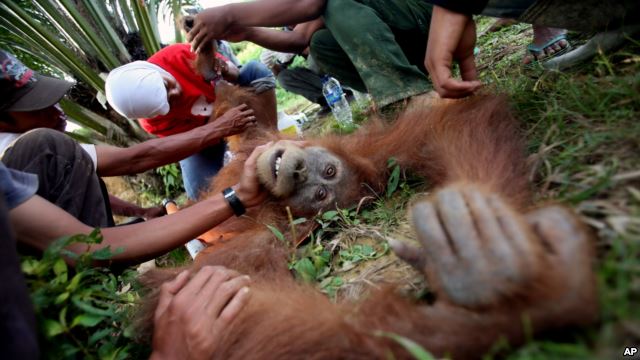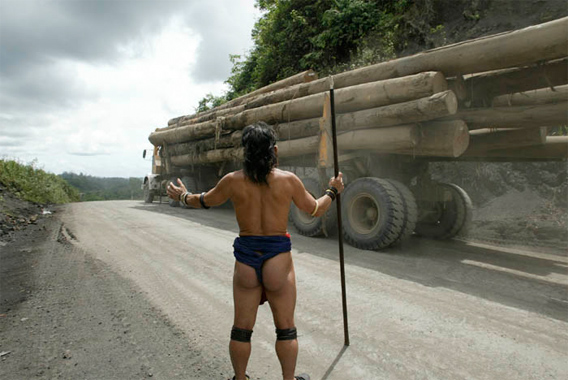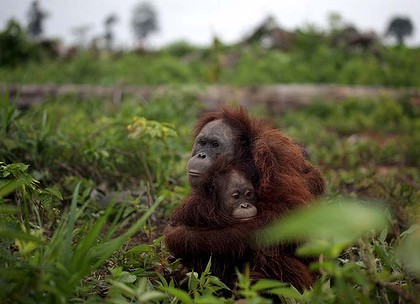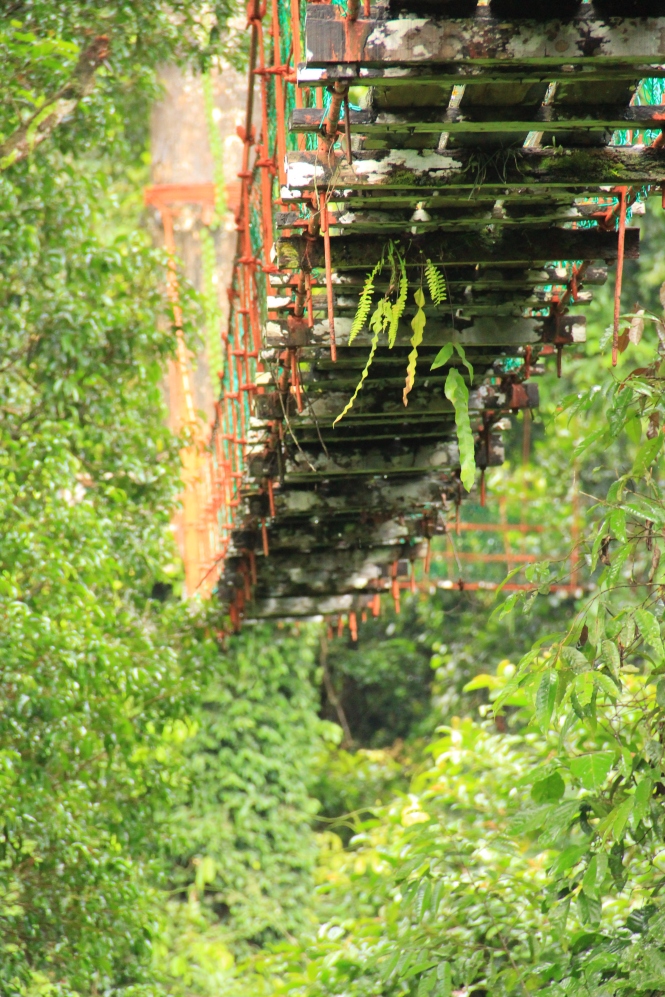Perhaps the most wonderful place we visited in Borneo was Danum Valley, a 440sq km conservation area of remote, untouched, thick rainforest which has a superabundance of wildlife. It’s also known as the world’s oldest rainforest. The rainforest is mostly visited by hundreds of scientists, but it’s also open for tourists who are seeking for an adventure in the jungle. Henri and I decided that we want to do some trekking in the rainforests, so we booked a three-day trip and an accommodation from the Borneo Rainforest Lodge, which is one of the only two places where to stay in Danum Valley.
The drive from Lahad Datu town took over 2,5 hours of which 2 hours we were driving on a bumpy road leading deeper and deeper into the forest. There were a few checkpoints and even pictures of armed guards as a warning for poachers. Serious business this rainforest protecting (in a good way)! Only during the drive to our accommodation we saw a hawk, another huge bird and two separate orangutans! The trip had started well and everything seemed promising.
Once we made it to the Rainforest Lodge and had a chat with our guide (you cannot enter the forests without one), it started raining. And it rained. And rained. And rained… Our guide had to cancel the entire first day of hiking in the forests, and not because we were made of sugar, but because it would have been too dangerous! It was disappointing, but that’s just Borneo. You never know what the weather will be like. There’s two seasons on the island, the wet one and the rainy one.
The next morning we rolled out of bed to go and test the canopy walkway, which was a long swinging bridge high up above the trees. We were trying to find Gibbons, but in the end we didn’t see any. Instead we got to tease the “touch me not” -flower, take a close look at different sorts of bugs, and spot a bearded pig on the way back for breakfast. It rained light rain all morning, which made me feel a bit grumpy. However our guide was wise and told us that without rain there would never be a rainforest. It’s true. The rainforest of Danum Valley requires 2 hours of rain daily!
The actual hike of the day contained rain, mud and leeches. It was too hot to wear a raincoat, but too wet not to (I was also avoiding the leeches with my rain gear). We hiked up a steep hill known as the “coffin cliff”. At this place we saw some remainings of human bones and old coffins because it once was the place where the Kadazan-Duzun people used to take the dead. We didn’t only climb all the way to see some bones, but to reach an eye-popping panoramic viewpoint. From the top of the cliff we could see the rainforest covered in mist below us, it was straight from a postcard! On the way back to the lodge we spotted an orangutan, macaques, some lizards and birds. We also took a refreshing swim under a small waterfall!
One of the surest ways to see some of Danum Valleys’ “night shift” is to take a night drive. This is what we did, and not only did we get to witness the flying squirrels, but also a rare civet! That “badger cat” was something I never knew about until then. It was only when our guide explained that this is the cat that eats coffee beans, and from its droppings you can make expensive coffee, that I realized what the civet actually was! Quite a funny animal, really. Oh, and a samba deer got “caught in the headlights” too. Because the hikes of our previous day had been cancelled, our guide decided to take Henri and me for a short night walk. Frogs and huge bugs were the most common sightings we saw, but we also got a surprise when our guide spotted a huge hairy tarantula! Henri was disappointed for not seeing any snakes, crazy man.
On the third morning we went for one last hike with our guide. Seeing (and hearing) a huge rhinoceros hornbill fly over us was unforgettable! I’d only raised my camera when the hornbill had already flown away. Just like many other animals in Danum Valley, I’d only seen that bird on television. As we made our way through the jungle, it began to thunder. The forest around us suddenly lost all of its light and we were experiencing what it’s like to be in a rainforest during a storm. Suddenly we heard a huge bang when an old branch snapped from a 50 meters high tree! The branch fell into a river and didn’t only scare us but a big fat monitor lizard too. Another reason why it can be dangerous in the rainforest during storms is that the paths become slippery. If you fall on one of those steep paths you can’t just grab a branch as it might have a snake or thorns on it! There were many things we had never even thought about until hiking with our knowledgeable guide. The storm finished as quickly as it had started, and we were soon safely out of the forests and on our way back to Lahad Datu.
Just before we left the bumpy roads of Danum Valley a heard of pygmy elephants ran across the road! We also saw another samba deer. Those small surprises of nature always put a smile on my face. It’s Borneo. I hope to go back to Danum Valley one day. I also hope it’ll stay the same forever.


A “bachelor male” orangutan’s nest! / Poikamiesorangin sotkuinen pesä



Mud! / Mutaa, paljon mutaa




Holding a millipede which is hiding inside its shell! / Uskalsin ottaa käteeni kuoreensa piiloutuneen tuhatjalkaisen






Jos mun pitäisi suositella Borneon Sabahista vain yhtä paikkaa, niin se olisi varmastikin Danum Valley. Tämä on Aasiassa niitä harvoja alueita, missä sademetsä on vielä täysin koskematonta! Danumia kutsutaan myös maailman vanhimmaksi sademetsäksi, enkä ollenkaan ihmettele miksi. Danumin Laakso kattaa 438 neliökilometriä tiheää primäärisademetsää, jossa on mahdollisuus tehdä useamman tunnin vaelluksia yhdessä oppaan kanssa. Varasimme kolmen päivän mittaisen retken Danumiin lomamme loppupuolella.
Lahad Datun lentokentällä meitä vastassa seisoi opas, kuski ja iso maastoauto. Loikkasimme kyytiin kuvitellen, että 2,5 tunnin ajomatkasta menisimme 2h moottoritietä ja sitten 30min soratietä majoituksellemme Danumiin. No, tämä menikin ihan toisin päin! Kuoppaista kyytiä saimme kestää peräti kaksi tuntia, ja välillä pysähdyimme pienille tarkistuspisteille näyttämään lupapapereita. Jokaisen tarkistuspisteen kohdalla oli viidakon koskemattomuutta ja “syvyyttä” osoittava kyltti, joista oli helppo seurata matkanteon etenemistä. Luonnonsuojelualueelle saapuessamme näimme myös kuvan aseistetusta vartijasta, sekä uhkauksen, että salametsästäjiä rangaistaan. Jo pelkästään auton ikkunasta hoksasimme valtavan haukan, punamustan suuren linnun (jonka nimeä en tiedä), ja lopulta bongasimme vielä kahdesti orankeja! Retkemme alku oli siis todella lupaava.
Danumin laaksossa on vain kaksi majoituspaikkaa. Ensimmäinen niistä on Borneo Rainforest Lodge, joka on niin lähellä viiden tähden majoitusta kuin sademetsässä vain on mahdollista. Siellä hintaan kuuluvat (valtavat) ateriat upealla viidakkonäkymällä, mökkimajoitus, lämmin suihku sekä opas sademetsiin. Rainforest Lodgen alueella on korkea riippusiltatie, joka vie matkailijan 30 metrin korkeuteen löytämään lintuja ja erilaisia apinalajeja. Toinen majoituspaikka on laakson oma tutkimuskeskus, jossa tutkijoiden lisäksi majailee valokuvaajia, journalisteja ja muita työnsä puolesta Danumissa vierailevia ihmisiä. Myös turistin on mahdollista majoittua tänne, mutta silloin on oltava valmis tinkimään mukavuuksista sekä opaspalveluista, joista ainakin jälkimmäinen tuli mulle ja Henrille tarpeeseen tuolla. Tutkimuskeskus on huomattavasti halvempi yöpymispaikka kuin Borneo Rainforest Lodge, ja mahdollistaa hintansa puolesta hieman pidemmän vierailuajan Danumissa. Me valitsimme tällä kertaa kalliimman vaihtoehdon ja onneksi, sillä kolmesta Danumissa vietetystä päivästä kahtena satoi kaatamalla vettä.
Oltuamme perillä alle 15min, sininen taivas vaihtui koko päivän kestäväksi rankkasateeksi. Oppaamme joutui turvallisuutemme vuoksi perumaan kaikki päivän vaellukset, sillä viidakko muuttuu sadesäällä vaaralliseksi ja vaikeakulkuiseksi. Kieltämättä meitä kismitti kovasti, mutta olimmepahan turvassa. Upean illallisen äärellä tuli jo huomattavasti parempi mieli.
Aamulla sade oli hetkeksi lakannut, ja puiden yläpuolella leijaili usvaa, aivan kuin postikorteissa! Tietenkin päivän ensimmäiselle vaellukselle lähtiessämme sade yltyi jälleen, mutta oppaamme päätti viedä meidät siitä huolimatta pienelle kävelylle. Riippusillalla kulkeminen oli pelottavaa! Sateen vuoksi moni eläin oli vetäytynyt piiloon, joten aamun vaelluksella näimme vain satunnaisia ötököitä, kosketukseen reagoivia arkoja “touch me not” -kukkia, sekä partasian, joka on sukua villisioille. Danum Valleyn tunnetut Gibbonit jäivät yrityksistä huolimatta näkemättä.
Iltapäivän vaelluksella sade oli jo lakannut, mutta vettä, mutaa ja verenhimoisia iilimatoja riitti kerrakseen. Eipä ollut siis mitään luksustouhua tuo sademetsässä vaeltaminen! Oppaamme jaksoi kuitenkin muistuttaa, että ilman sadetta ei Borneossa olisi myöskään näin upeaa ekosysteemiä. Kuumassa ja kosteassa ilmassa kulkeminen oli todella rankkaa, ja hetkittäin tuntui siltä kuin hengittäminenkin olisi mahdotonta. Pääsimme kuitenkin lopulta ison kukkulan huipulle, jolta avautui aivan uskomattomat näkymät Danumin Laakson ylle! Tämä kukkula on nimeltään “Coffin Cliff”, sillä se on satoja vuosia sitten toiminut sademetsien heimojen hautapaikkana. Mekin näimme ihmispääkallon ja hauta-arkun. Paluumatkalla pulahdimme pienen vesiputouksen alle uimaan, mikä oli virkistävää kaiken hikoilun jälkeen. Ehdin jo pelätä, että jälleen palaisimme lodgelle ilman mitään havaintoa eläimistä, mutta lopulta löysimme orangin, joka lähti tosin hyvin nopeasti karkuun. Makakeja riitti, samaten erilaisia liskoja, lintuja ja hyönteisiä. Osaisinpa nimetä ne kaikki!
Pimeän tullen oppaamme vei meidät yöajelulle. Istuimme auton avoimella takalavalla taskulamput kourassa ja pompimme möykkyisillä teillä lähes tunnin ajan. Yöllä bongattujen eläinten saldo oli jo ihan hyvä, näimme Sambapeuran, liito-oravia (on muuten hassuja, kun ne “lentelee” jopa sata metriä kerralla), lepakoita, lintuja sekä hieman harvinaisemman Borneon sivettikissan! Vielä ennen nukkumaanmenoa oppaamme esitteli meille lähistöltä löytyviä erilaisia hyönteisiä ja sammakoita. Saimme ihailla lähietäisyydeltä jopa tarantellaa! Henri oli pettynyt, kun emme löytäneet käärmeitä. Kumma heppu.
Viimeisen päivän ohjelmaan kuului vielä yksi pitkä vaellus. Vihdoin ja viimein huomasimme puun oksalla harvinaisen sarvinokkalinnun! Tällaisia vilahtelee toisinaan televisiossakin, mutta luonnossa tuo vasta upea olikin. Kuten monen muunkin eläimen kohdalla, en nytkään ehtinyt edes kameraa kohottaa, kun lintu jo lähti lentoon. Sademetsässä kuulimme ensin ukkosen jyrinää, ja sen jälkeen näimme kuinka ainakin 50 metriä korkeasta puusta katkesi kovalla pamahduksella vanha oksa, joka mätkähti alas jokeen! Juuri tällaisien asioiden vuoksi sademetsä muuttuu huonolla säällä vaaralliseksi. Liukkailla poluilla kulkeminen oli myös hieman pelottavaa, sillä liukastuessa ei saa ottaa kiinni mistään käärmeiden tai vaarallisten piikkikasvien varalta. Kompuroitua tuli onneksi kuitenkin vain pari kertaa, ja näin selvisimme ulos metsästä ehjin nahoin, noh, iilimatojen puremia lukuun ottamatta.
Kotimatkalla saimme vielä kerran palan sademetsän antia, kun havaitsimme auton ikkunasta ensin Sambapeuran, ja sitten tielle pompahti lauma pygmielefantteja! Sää oli jälleen aurinkoinen, ja eläimet liikkeellä, tietenkin juuri meidän lähtiessämme pois.
Tosiaan, Danum Valleyssa on ehkäpä koko Borneon saaren parhaita paikkoja nähdä mahdollisimman monipuolisesti eläimiä. Suojelualueella asuu aivan uskomaton määrä erilaisia eläinlajeja, ja useiden harvinaistenkin lajien näkeminen tuolla on enemmänkin sääntö kuin poikkeus. Meillä oli Henrin kanssa Danumista tosi korkeat odotukset, joten jouduimme surkean sään vuoksi hieman pettymään. Asia on kuitenkin niin, että ilman sadetta ei olisi sademetsääkään, ja Borneossa ei vain koskaan voi tietää mitä tuleman pitää. Oppaamme sanoi aika hienosti: “Luonto antaa mielellään salaisuuksiaan, mutta se myös ottaa sinulta hinnan siitä.” Näin kävi siis meillekin, kun koko reissun aikana oli mieletön tuuri eläinten kanssa, mutta Danumissa sitten hieman tavallista surkeampi tuuri. Toivonkin siksi, että joku päivä saisin mahdollisuuden päästä takaisin tuonne. Jokainen päivä on Danumissa erilainen, ja kaikki on lopulta tuurista kiinni.
En vaihtaisi kokemustani Danum Valleyssa mihinkään, sillä jo pelkästään sademetsässä kulkeminen oli huimaavan hienoa ja nautinnollista! Danumin Laakso on aivan taatusti yksi kauneimmista paikoista, jossa olen koskaan käynyt. Toivottavasti se pysyy sellaisenaan aina.


